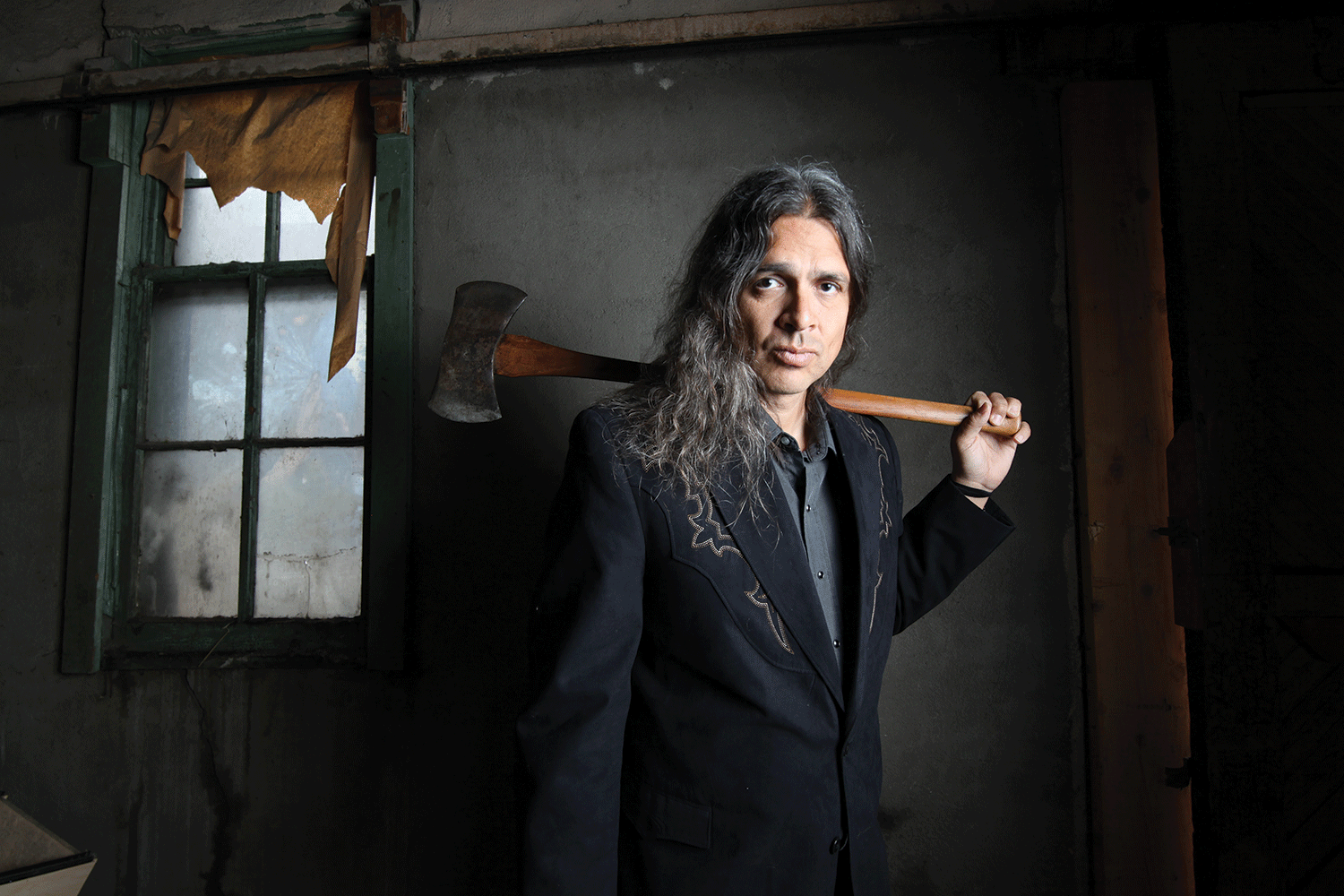Inquiry: Stephen Graham Jones
CU English professor Stephen Graham Jones got hooked on werewolves as a boy in West Texas. Now he’s made them the stars of his latest novel, Mongrels (William Morrow 2016).
How would you describe the classic werewolf?
The classic werewolf is pretty much straight from [the film] The Wolf Man, 1941. Silver was the thing that killed the wolf. The bite was what infected the wolf. Even the mark of the beast that’s in The Wolf Man became part of the legend for a while. But in the 20th century it’s been furry hands, furry head, furry feet in clothes.
So, part human, part wolf?
It is, it’s a hybrid.
What are the special powers or abilities that a werewolf has?
It’s violent, strong, it can smell well, has a bite. It’s a predator. An ambush predator specifically.
Is there a canonical attitude or way of life for these werewolves?
They’ve been seen for decades as in contrast to the vampire, largely. The vampire is usually this high-society monster. And so the werewolf will often be the opposite — low-income, struggling to get by, can’t control their temper.
How do the werewolves in Mongrels fit into the werewolf literary tradition and how are they different?
You have to either take into account all the werewolves that have come before or you have to pretend they didn’t exist. And I thought it was kind of insulting or prideful for me to just make it up as if from nothing. I went and looked back at every wolf text I could. And, of course, the most important one is The Wolf Man. So I studied and studied that movie.
Are they predators, your werewolves?
That’s their instinct. But they’re trying to make it under the radar, and so predation is for many of them the last resort. They try to work low-paying, cash-under-the-table jobs such [that] they can go to the grocery store and buy food.
Are there moments or phases for them when they would be conventional, law-abiding members of human society?
They’ve been kicked by society so many times that they have a hard time being law-abiding. They’re proud of being werewolves, but they don’t want to get caught being werewolves, so they try to not wolf-out unless they have to.
Why do you think humans are drawn to monsters?
For different reasons. The werewolf — I think the reason that that’s still a vital story for us is that more and more we’re characterizing ourselves as kind of thinking machines, as the bipedal version of our smartphone. We always feel as a culture that we’re just a half-step away from being able to download ourselves into a server somewhere. What a werewolf story tells us is that we’re animal and we’re human. We have base instincts. And if we don’t let those instincts out periodically, then they’re going to rise on their own in a bad way.
What draws you to monster stories and werewolves in particular?
If seven out of 10 werewolf stories I read are a failure, nevertheless I’m still going to have seen a cool werewolf, and so it’s not a total failure. It’s just a better gamble. If a werewolf isn’t a phenomenon in nature, how can we talk about its having biology? The monster you can believe in is a scarier monster.
Tell me a little bit about being 12 and discovering the werewolf and its meaning for you.
I used to try to become a werewolf when I was that age. Trying to drink after wolves. Rolling in the moonlight in the sand. Eating raw meat. None of it seemed to be making me into a werewolf. Finally, 30 years later, I just decided the way I was going to see werewolves was to write a novel about werewolves.
What’s in the works?
I just wrote a novel called Texas Is Burning, it’s a cop novel out of West Texas. It’s with the publisher now. Also I pitched Mongrels 2 and 3 to them as well. Aside from that, I’ve got three other finished novels already.
Are there any werewolves in Texas Burning?
There are not. Just cops and bad guys.
Condensed and edited by Eric Gershon.
Photo by Anthony Camera







